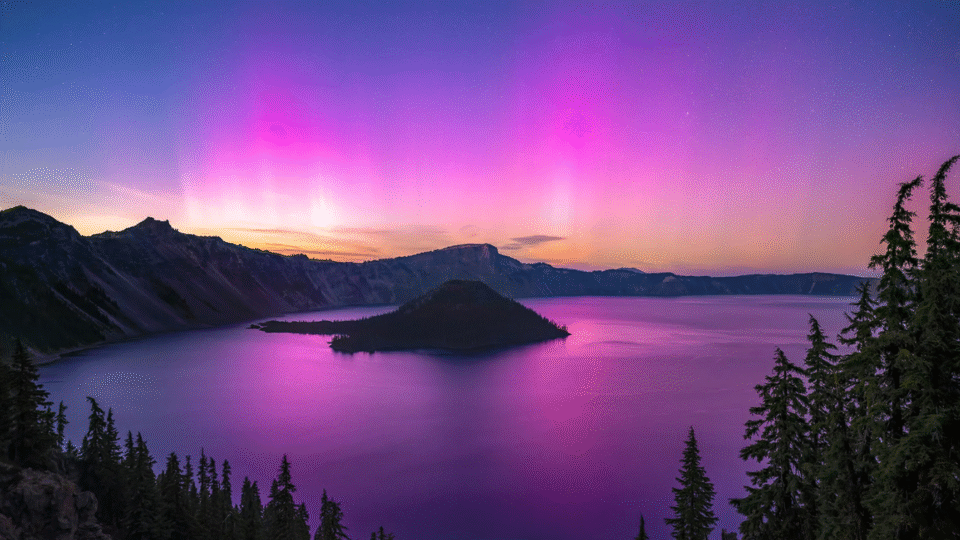The Aurora Borealis, or Northern Lights, is one of nature’s most breathtaking spectacles. While most people associate this phenomenon with Arctic regions like Alaska, Norway, or Iceland, did you know that you can sometimes witness the Aurora Borealis Oregon?
Yes, Oregon’s dark skies and northern latitude make it a surprising but possible destination for catching this celestial light show. If you’re curious about when, where, and how to see the Aurora Borealis Oregon, this guide will cover everything you need to know—from the best viewing spots to optimal times of the year.
What Causes the Aurora Borealis?
Before diving into Oregon-specific tips, let’s quickly understand what makes the Northern Lights appear.
The Aurora Borealis Oregon occurs when charged particles from the sun collide with Earth’s atmosphere. These particles interact with oxygen and nitrogen gases, producing stunning waves of green, pink, purple, and even red light. The stronger the solar activity (measured by the KP index), the farther south the auroras can be seen.
For Oregon to witness the aurora, a KP index of 7 or higher is usually needed—something that happens only during strong geomagnetic storms.
Best Time to See the Aurora Borealis Oregon
1. Best Months for Aurora Viewing
While the Northern Lights are technically possible year-round, the best chances in Oregon are during:
- September to April: These months have longer nights and increased geomagnetic activity.
- Equinoxes (March & September): Solar activity tends to spike around these times.
2. Ideal Time of Night
- 10 PM to 2 AM: The darkest hours, when auroras are most likely to appear.
- Around Midnight: Peak visibility often occurs around this time.
3. Check Solar Activity
Since auroras depend on solar storms, always monitor:
- NOAA’s Aurora Forecast (www.swpc.noaa.gov)
- Space Weather Live (www.spaceweatherlive.com)
- Aurora Apps (My Aurora Forecast, Aurora Alerts)
A KP index of 7+ increases Oregon’s chances significantly.
Best Places to See the Aurora Borealis Oregon
Oregon’s light pollution and coastal clouds can make aurora sightings tricky, but these locations offer the best odds:
1. Central & Eastern Oregon (High Desert & Mountains)
- Fort Rock – Remote, dark skies with minimal light pollution.
- Alvord Desert – One of Oregon’s darkest spots, perfect for auroras.
- Bend/Sunriver – Higher elevation helps with visibility.
2. Northern Oregon (Near Portland & Columbia River Gorge)
- Crown Point (Vista House) – Elevated views away from city lights.
- Rooster Rock State Park – Open skies near the Columbia River.
- Mount Hood – Higher altitude improves visibility.
3. Oregon Coast (If Conditions Align)
- Cannon Beach (Haystack Rock) – Rare but possible during strong storms.
- Cape Perpetua – High vantage points may help.
Note: Coastal areas often have cloud cover, so check weather forecasts.
How to Increase Your Chances of Seeing the Aurora Borealis Oregon
- Track Solar Storms – Use aurora forecast tools.
- Get Away from City Lights – Light pollution is the enemy.
- Choose Clear, Moonless Nights – Clouds and bright moons reduce visibility.
- Be Patient – Auroras can appear suddenly or not at all.
- Bring a Camera – Long-exposure shots capture faint auroras better than the naked eye.
Photographing the Aurora Borealis Oregon
If you’re lucky enough to catch the Northern Lights, here’s how to photograph them:
- Use a DSLR or Mirrorless Camera – Smartphones struggle in low light.
- Wide-Angle Lens (14-24mm) – Captures more of the sky.
- Tripod is a Must – Prevents blur from long exposures.
- Manual Settings:
- ISO: 1600-3200
- Aperture: f/2.8 or wider
- Shutter Speed: 10-25 seconds
Conclusion
While seeing the Aurora Borealis Oregon is rare, it’s not impossible! With the right timing, location, and a bit of luck, you might witness this magical phenomenon without leaving the Pacific Northwest.
Key Takeaways:
✔ Best Time: September-April, around midnight, during high solar activity (KP 7+).
✔ Best Locations: Alvord Desert, Fort Rock, Crown Point, Mount Hood.
✔ Preparation: Check aurora forecasts, avoid light pollution, bring a camera.
Have you ever seen the Northern Lights in Oregon? Share your experience in the comments!

